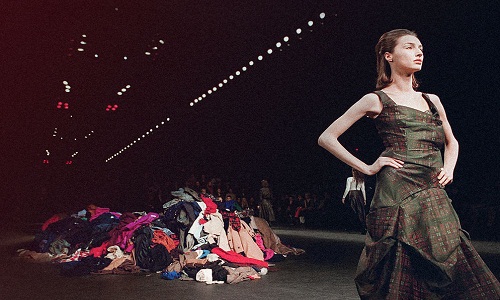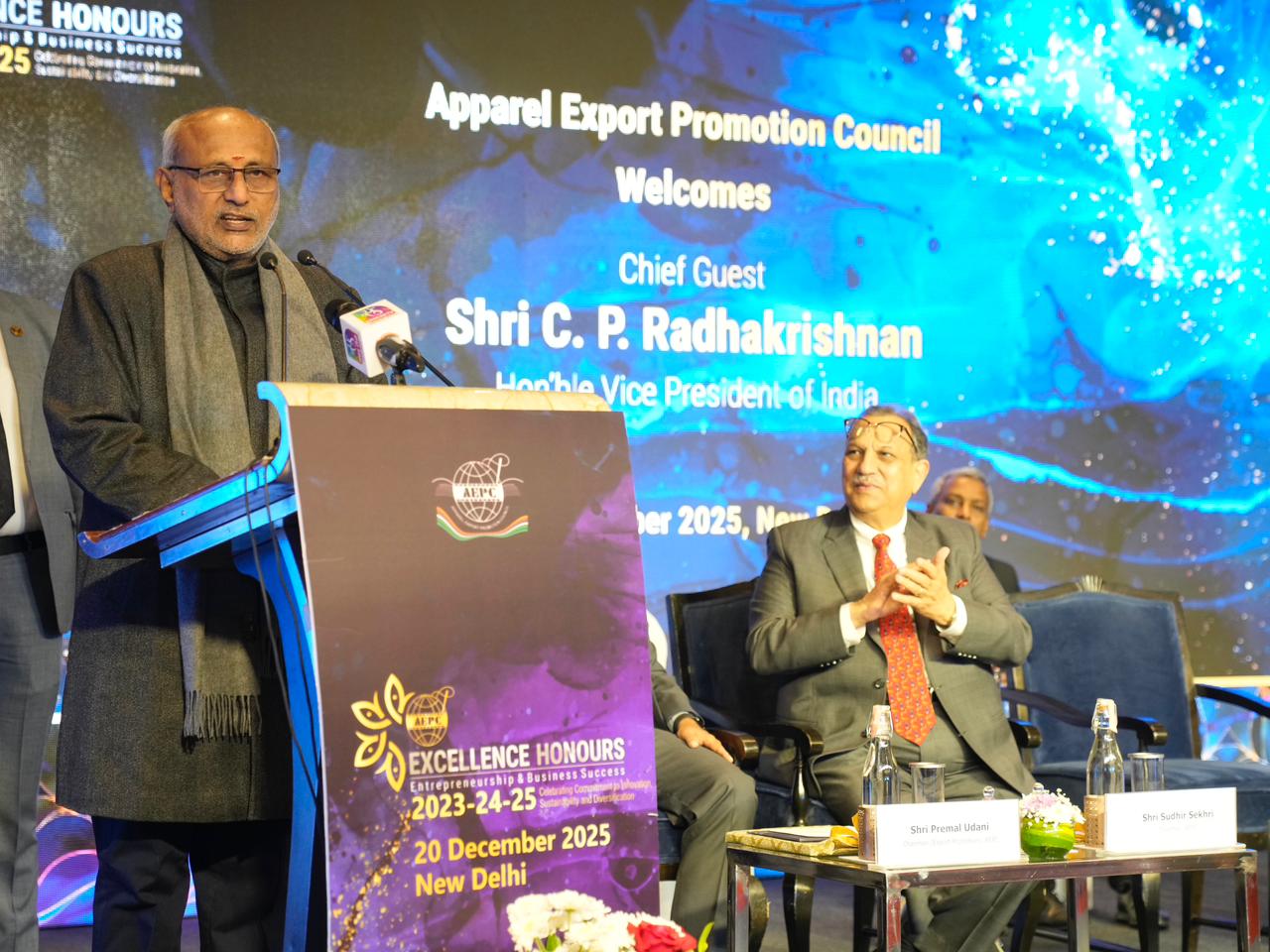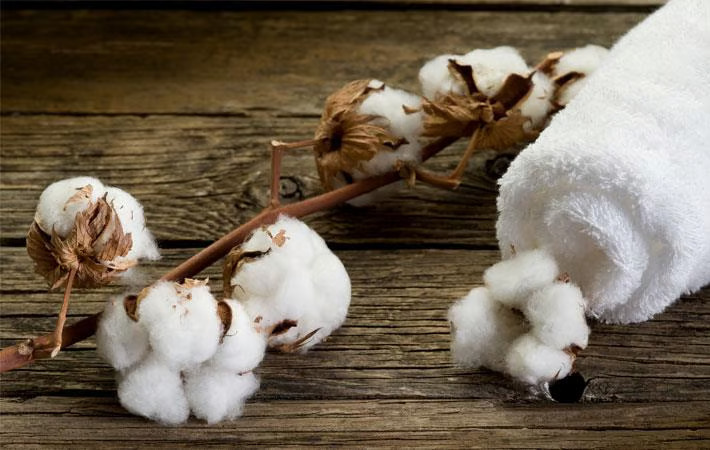FW
By focusing on flexibility, rapid delivery times and customised solutions, Italian textile companies are relying on innovative production technology. Fabrics carrying the Made in Italy label are always popular – a trend that is generating good business for machine builders. Italian weavers depend on Karl Mayer’s warp preparation machines. And Karl Mayer’s warp preparation business unit has also spotted this trend for expansion and renewal.
The Giro-O-Matic 24 and the Multi-Matic 128 sample warping machines and the Nov-O-Matic automatic, short-warp sectional warping machine have proven to be real bestsellers. The reason customers are interested in these innovative machines is their high operating speeds, exceptional beam quality, and their advantages in terms of the number of operatives needed to operate automatic systems. The performance of these machines is quite unique. They are currently without rival, and are in especially high demand in the weaving cluster.
Karl Mayer’s order books are full. It saw an increase in orders in 2014, but the real boom started in 2015, which is expected to continue until 2016. Italy represents elegance and exclusivity in fashion like no other country, and this country still heads the top price bracket. Premium Italian fabrics enjoy an excellent reputation, and are finding new customers in the emerging economies, where great importance is attached to high-end brands.
ITMA Asia + CITME, the exhibition for textile and textile machinery, is coming back to Shanghai this year. It would be held from October 21-25 at a new location- the National Exhibition and Convention Centre (NECC). Despite some talk within about the show’s decision to run on a biennial schedule rather than the expected four-year cycle, this show at Shanghai coming up on the heels of a successful ITMA 2015 in Milan, Italy, promises to be a well-attended event.
Organizers of the show have reported that approximately 1,600 exhibitors from more than 27 countries are expected to participate in the show this October. At the close of space applications for exhibitors, more than 90 per cent of the 180,000 square meters of exhibition space had been sold out, it has been disclosed. In addition, the organizers hope to attract more than 100,000 trade show visitors from around the globe.
The show is owned by the European Textile Machinery Manufacturers Association (CEMATEX) and its China-based partners, the Sub-Council of Textile Industry, CCPIT (CCPIT-Tex); China Textile Machinery Association (CTMA); and China Exhibition Centre Group Corp. (CIEC).
The event is organized by the Beijing Textile Machinery International Exhibition and co-organized by MP Expositions. In addition, the Japan Textile Machinery Association (JTMA) is a special partner of the show.
Cotton cultivation in India has declined by 8 per cent this year. Reason: a large number of cotton growing farmers have switched to food crops such as soybean for better returns. Generally, farmers prefer cotton as it requires less of water. Recession in the global market last year, however, has led to a crash in cotton prices. In addition, poor yields and high cultivation costs have made cotton less lucrative over the years.
Last year's recession in the cotton market, reduced exports to China and the US, international stock hoarding and skewed minimum support price are supposed to be the prime factors behind the sudden decline in cultivation of this cash crop.
Barring Punjab, Gujarat and MP, all cotton growing states have witnessed a huge drop in acreage this year. Tamil Nadu topped the chart with one-third of the cotton land going to other crops. Maharashtra – the second largest cotton growing state in the country after Gujarat – has witnessed a nine per cent decline in cotton sowing. The total cotton output of India is also expected to be 352 lakh bales, compared to 380 lakh bales a year ago.
The domestic textile industry might bear the brunt of all this. Anticipation of low cotton production has already led to a sudden jump in cotton and yarn prices. This spells a tough time for the sector that is already under stress due to the skewed global demand for the last two years.
"Fashion retailers are feeling the heat from warming winter. According to Co. Design, a Patagonia spokesperson, climate change ‘a serious crisis’ for its business. And while retailers like J. Crew, H&M, and Nordstrom decline to comment, the numbers speak for themselves. Uniqlo, H&M, and Gap all announced major seasonal shortfalls this year, and Macy’s is actually cutting more than 4,500 jobs following slumpish holiday sales, blaming 80 per cent of its revenue shortcomings on cold-weather goods like jackets, hats, and scarves that just didn’t sell."

Fashion retailers are feeling the heat from warming winter. According to Co. Design, a Patagonia spokesperson, climate change ‘a serious crisis’ for its business. And while retailers like J. Crew, H&M, and Nordstrom decline to comment, the numbers speak for themselves. Uniqlo, H&M, and Gap all announced major seasonal shortfalls this year, and Macy’s is actually cutting more than 4,500 jobs following slumpish holiday sales, blaming 80 per cent of its revenue shortcomings on cold-weather goods like jackets, hats, and scarves that just didn’t sell.
Experts in the fashion industry are already speaking openly about how climate change is transforming their business models, their designs, and the very notion of seasonal fashion itself.
Preplanning collections

It’s a common practice for winter fashion to hit shelves in July. Those heavy pieces may have hit catwalks and started the journey to production anywhere from 6 to 18 months before they arrived in a store. And yet, for all this preplanning, nobody buys a winter coat in the sweltering days of summer - and some brands are beginning to question the long lead time.
Says Yael Aflalo, Founder and CEO of fast US fashion brand Reformation, typically the way the industry is set up is a little odd, where you sell sweaters in July in anticipation of September. It becomes this game of racing to get a fresh product a little too early. Most people buy sweaters when it’s cold outside. Aflalo has built her business on limited-run clothing, produced only four to six weeks before it reaches shelves. This year, as warm weather stuck around, the company's unusually short production pace paid off and allowed it to quickly reassess how much winter stock it really needed.
Meanwhile, retailers have capitalised on delays that had summer items arriving in Fall. Rebecca Minkoff admits that her business had a lucky break in this seasonal scheduling. While they had planned to ship a suede jacket in July, a delay in the tannery pushed it back to October and November. To anyone outside the fashion industry, the idea of garments that are produced during the season in which they'll be worn seems obvious and logical - especially when it's increasingly tough to know what weather the next season has in store. In fact, that’s why Minkoff is changing the timing of seasonal shows. Instead of wooing retailers several seasons in advance to place speculative orders on what people might want months in the future, Minkoff is running consumer-facing runway shows closer to actual ship dates.
Traditionally, designers show their Fall line in February -- seven to eight months before anyone wears it. Minkoff is showing Spring in February, just a month before the season starts. This new show strategy, helps as consumers not just retailers have the option to buy the entire line right then. Not every retailer will be able to change its seasonal show schedule. As Minkoff points out, larger, more traditional retailers will need to learn how to juggle inventory across regions. If a city is colder than expected, these retails should have systems for getting those stores the cold goods, ASAP.
Designing for future
To some extent, the global, jet setting economy has already pushed designers to consider new, more environmentally-flexible fabrics. With everybody traveling so much, there’s a lot of things like lightweight wool that goes from tropics to winter places, or smart fabrics that can respond to clues in the event to get warmer or cooler. Some of the big companies interested in techno luxury, like Venia, are exploring those.
Adapting doesn’t necessarily need to be as complicated as inventing in super-advanced fabrics. For Reformation, it was a matter of skewing towards the right textiles and designs. Aflalo says, people are going to be more opting for things like medium weights. And as the weather stayed warmer than expected this fall, the company countered by releasing a more balanced assortment of middle weight items, more things like dresses, basic tops, more jeans, more things that are not as dependent on weather. The more obvious shift may not be the timing of clothing sales, but the design of the clothing itself.
Ironically, even in warmer climates, traditional winter fashion continue to define warm winter fashion. The heaviest of coats and sweaters, when produced in more limited supplies, will inherently become the statement pieces of the season, the rarer luxury garments for those who can afford to do more than dress in layers 12 months a year.
Winter seasonal items may no longer designed around the bulky, functional necessity of warmth, meaning they could be defined by a whole new aesthetic. Aflalo believes in human creativity. When there's less ability to be creative, then you figure out how to be more creative. Humans are remarkable creatures like that, she concludes.
"CENTRESTAGE, a brand new international fashion event organised by the Hong Kong Trade Development Council (HKTDC), would be held from September 7-10 at the Hong Kong Convention and Exhibition Centre. HKTDC Deputy Executive Director Benjamin Chau says, CENTRESTAGE has been designed to be a platform for international, especially fashion brands and designers from Asia to promote their brands and launch their collections."

CENTRESTAGE, a brand new international fashion event organised by the Hong Kong Trade Development Council (HKTDC), would be held from September 7-10 at the Hong Kong Convention and Exhibition Centre. HKTDC Deputy Executive Director Benjamin Chau says, CENTRESTAGE has been designed to be a platform for international, especially fashion brands and designers from Asia to promote their brands and launch their collections. The maiden CENTRESTAGE show will feature around 200 fashion brands and four thematic zones: Glam, Allure, Metro and Forward.
Thematic zones and brands an attraction
Glam will bring together top international brands that embody fashion of the highest quality. Allure will showcase sophisticated designs that captivate the senses. Metro will present trendy and sporty designs for cosmopolites while Forward will feature up-and-coming labels and budding fashion talents from Hong Kong and around the region.
Although still in its preparation stage, CENTRESTAGE is quickly gathering momentum and will showcase a long list of impressive brands like: 112 mountainyam, anagram, ANTEPRIMA, Aquascutum, ARTHUR LAM, ATSURO TAYAMA, Charmante, DORIAN HO, Galtiscopio, HARRISON WONG, i.t, KOYO, LOOM LOOP, LU LU CHEUNG, MOISELLE, NOSTRUM and Sudo Kids.
To boost Hong Kong's position as the region's fashion capital, a large-scale fashion parade entitled CENTRESTAGE Elites will be staged on the first day of the event where top models will showcase latest fashion collections from four of the hottest design units in Asia for what promises to be a spectacular fashion extravaganza.
The 40th Hong Kong Young Fashion Designers' Contest (YDC), to be held on September 10, will be another highlight at CENTRESTAGE. Over the years, YDC has played a significant role in identifying emerging talents for the local fashion industry including Barney Cheng, Cecilia Yau, Harrison Wong, Joseph Li, and rising designers such as Aries Sin, Mim Mak and Mountain Yam. YDC is an invaluable platform for fashion designers who aspire to launch their own labels to showcase their works and creativity.
CENTRESTAGE will feature multiple fashion shows and brand showcases to provide a platform for international labels to promote their latest collections. The HKTDC will also organise networking events and trend seminars during the show, and invite seasoned industry professionals and experts to analyse the latest market trends in fashion.
On the last day, CENTRESTAGE will transform into Openstage when visitors aged 12 or above will be admitted free of charge. Openstage will provide public the opportunity to experience a trendsetting fashion event look up-close at latest collections and connect personally with designers who created them.
Lingerie and swimwear trade show Mode City was held in France from July 9, to and 11, 2016. However, this time only 11,000 visitors attended compared to 14,000 last year. There was a decline in footfall of almost 20 per cent. The sectors represented at the show include: lingerie, loungewear, ready-to-wear, nightwear, swimwear, beachwear, beach accessories, beach bags. Visitors were lingerie and swimwear buyers like multi-brand retail outlets specialising in lingerie, department stores and multi-brand ready-to-wear retail outlets with swimwear sections.
Mode City is the world leader in swimwear and summer lingerie market. First introduced in 1985, Mode City takes place every year. It is one of the well-known occasions for people in the fashion, clothing and textiles industries to meet.
If the French contingent saw a drop in attendance, the decline in international visitors was even greater. The economic climate, bad weather, terrorism and political unrest in France hindered traffic. Security factor added to the hesitation of attendees. But Italian and Swiss buyers were well represented, while Spanish maintained their presence, recording similar numbers to last year.
Increasing demand for biodegradable, environment-friendly, versatile and cost-effective materials from end-use industries is key factor that encourages demand from the global cellulose fibers market. The production of man-made fibers involves the industrial processing of wood pulp derived from botanical sources while the manufacture of cellulose fibers entails chemical and mechanical processing of wood pulp. Acetate, viscose and triacetate are the different variants of rayon, a man-made cellulose fiber which are used extensively across several industry verticals.
With rising global concerns related to carbon emissions, excessive oil dependence and fuel sustainability, the demand for cellulose fibers is expected to increase substantially. Industry trends indicate that the global market for textiles will focus greatly on biodegradable, eco-friendly and skin-friendly fabrics. This is a key factor that will propel the global cellulose fibers market in the years to come.
The global cellulose fibers market is bifurcated on the basis of applications and geography. On the basis of application, the cellulose fibers market is divided into sections like clothing, spun yarn, fabrics and others including tapes, sealants and adhesives.
The other end-use industries for this market are carpet production and the paper industry. With demand exceeding 50 per cent of the total, clothing is the largest end-use segment of the global cellulose fibers market. This segment is anticipated to expand rapidly in the forthcoming years.
Also, the segment for spun yarn is anticipated to expand at a CAGR of 7.3% between 2012 and 2018. Viscose, corn fibers, tencel, lyocell, modal and rayon are the different forms in which cellulose fibers are applied in industries.
Latest data reveals, China's share of the value of EU clothing imports has declined steadily over the last five years to the benefit of South Asian countries, particularly in lower-end products. China’s leading position continued to be eroded by increasingly vigorous entry of other production zones, says a European Apparel and Textile Confederation (Euratex) bulletin.
In 2010, China's market share of EU textiles and clothing imports stood at 40.8 per cent. However, this had fallen to 35 per cent by 2015. Euratex explains that the tendency for China seemed to be more and more textile exports whose production was facilitated by more sophisticated and productive machinery, at the expense of garments which are much more labour intensive. The main beneficiary was the South Asian Association for Regional Cooperation (SAARC) zone – Bangladesh, India, Maldives, Nepal, Pakistan and Sri Lanka which has gone in the opposite direction to China since 2010.
From 19 per cent in 2010, SAARC’s market share of textiles and clothing imports rose to 24.6 per cent in 2015. The ASEAN (Association of Southeast Asian Nations) zone, which is smaller than the SAARC, showed enough drive and economic dynamism to grow its share of textile and clothing imports from 6 per cent in 2010 to 8.6 per cent in 2015. The Mediterranean countries, however, experienced the same scenario as China. Despite having long enjoyed the advantage of their proximity to the EU-28, and still a major supplier, their share contracted from more than 20 per cent in 2009 to 18 per cent last year.
Textile manufacturing market in Serbia is expected to grow at a CAGR of 3 per cent during 2016-2020, according to a latest Technavio forecast report. The study covers the present scenario and growth prospects of the textile manufacturing market in Serbia for 2016-2020 period. The report also outlines the challenges faced by the manufacturers and the market at large, as well as the key trends emerging in the market.
Textile manufacturing is an integral part of the Serbian economy. It is export oriented and labour intensive, providing the country with huge employment opportunities and, therefore, is an industry that is highly favored by the government. The GDP is expected to accelerate in 2016 following a number of government policies such as relaxation in monetary policies and structural reforms, which are expected to improve the business environment and lead to the inflow of foreign investments. Manufacturers in the market are expected to capitalize the market and boost production. They are also expected to focus on exports, particularly to the EU, the country's most important trading partner.
Technavio consumer and retail analysts highlight three factors - Strategic location, Favorable trade agreements with EU and Low subcontracting costs that are contributing to the growth of the textile manufacturing market in Serbia.
Vietnam’s Ministry of Industry and Trade (MoIT) has proposed the development of large textile and garment industrial zones (IZs) to attract investment in dyeing, and fabric and yarn production. The 500ha to 1,000ha zones would attract local and foreign investment for high-end products.
The ministry has also proposed that the government provide full support for the building of textile and garment industrial zones located in provinces and cities experiencing socio-economic difficulties in order to create conditions for the success of small and medium startup enterprises, according to the ministry. The proposal also targets the development of transport infrastructure connecting the large industrial zones to ports and logistics centers and reduces transportation costs.
Meanwhile, the Vietnam Textile and Apparel Association (Vitas), has sent a document detailing the difficulties of textile and garment enterprises and proposed solutions, supports the IZ plan to the Government. The association also suggested the government provide credit for enterprises to build waste water treatment centers at those industrial zones.
Textile and garment exports grew in the first half of this year, but local firms face difficulties in obtaining production and export contracts for the second half of 2016, according to the MoIT. The ministry reported a six-per cent export increase in the first half of this year to US$12.8 billion.













